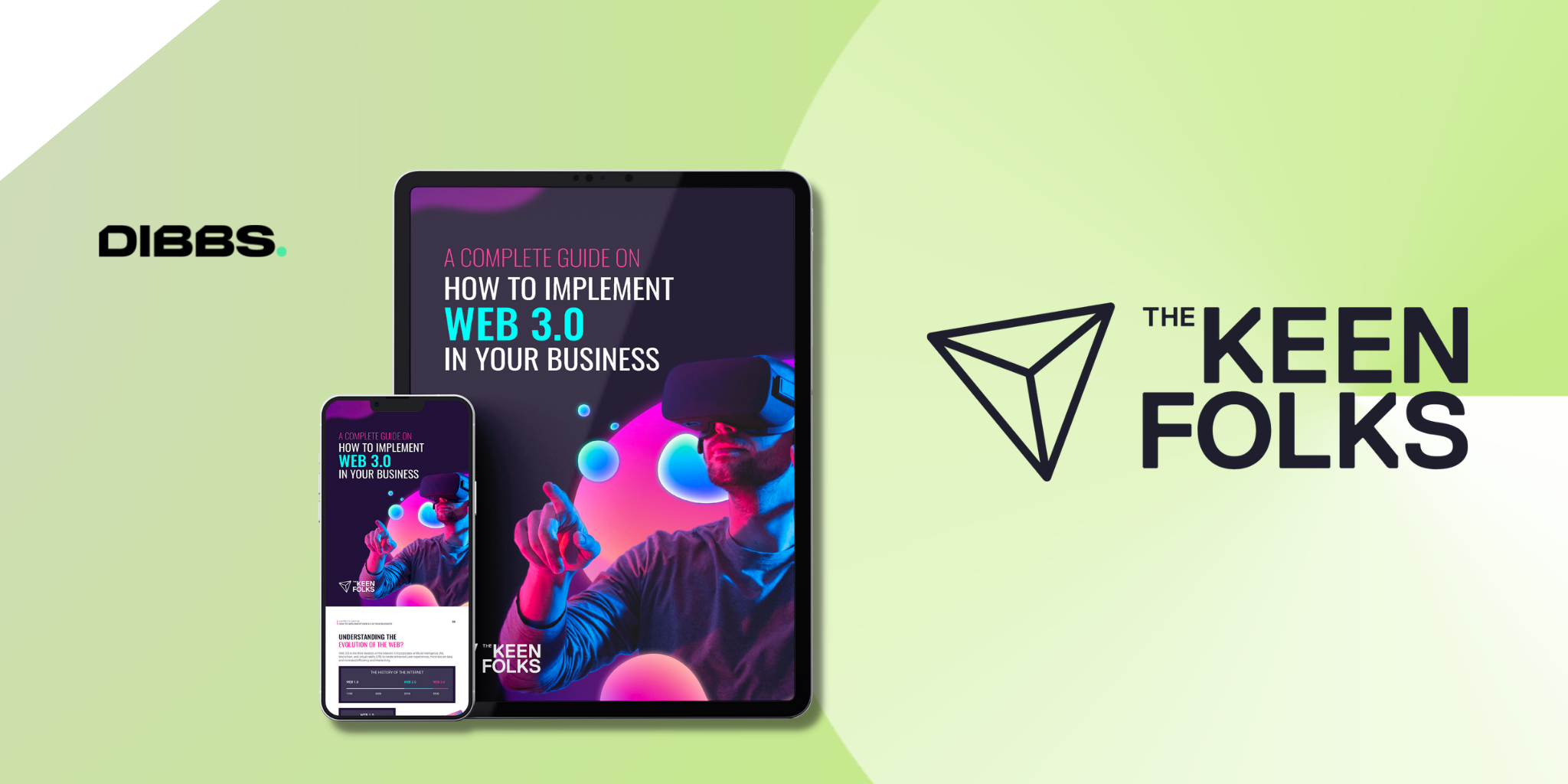How to Implement Web 3.0 in Your Business by The Keenfolks
With the adoption of non-fungible tokens (NFTs), the metaverse, and blockchain accelerating, businesses need to adapt to maintain their market position and achieve growth in this new landscape.

Many brands have already taken steps to capitalize on Web 3.0 since this is key to reaching consumers in the digital age. A Web 3.0 strategy in place can unlock new revenue streams, increase the efficiency of business processes, and future-proof your brand.
What makes this iteration of the internet special?
The first generation of the internet, or Web 1.0 (1989-2005), enabled users to access and share information from different computers. The primary goal of most web pages was to display information. Websites in this era were allowing users to connect with other people, share information, and create.
Web 2.0 (2004-2014) incorporated more interactivity. It saw the rise of e-commerce and social media platforms. Websites in this era allowed users to connect with other people, share information, and create.
But it’s only in the last 5-10 years that technology has allowed for a “read-write-own” internet. This is one of the key features that differentiates Web 3.0. The businesses that fail to prepare for Web 3.0. Blockbuster is a leading example of what can happen if a company fails to keep up with technological change and shifting consumer needs.
Why is this important?
- The term “Web3” gets nearly 336.4K Google searches per month.
- 81% of consumers who have heard about Web 3. Preparing your business for Web 3.
- Over $37 billion has been spent in NFT marketplaces as of May 2022.
Which are the top Web 3.0 components that brands are looking into?
The new iteration of the internet is a combination of current and emerging technologies. These involve the semantic web, metaverse, 3D graphics, connectivity (ubiquity), blockchain, digital identities, micropayments, AI & big data, and decentralization. Let’s take a closer look at the top 3:
- The Metaverse: it is one of the most exciting features of Web 3.0. It’s a digital space where users can interact, connect, collaborate, and have experiences using virtual reality (VR) and augmented reality (AR) technology.
- Digital Identities: Blockchain-verified digital identities could be one of the most impactful features of Web 3.0.
- AI & Big Data: While Web 2.0 has utilized AI and Big Data capabilities, it is primarily based on human input and decision-making.
What will Web 3.0 bring my company?
Embracing Web 3.0 technology can bring several benefits to businesses, such as improved customer relations, new revenue streams, and increased efficiency. To begin with, brands should focus on understanding their target audience, determining how to provide value through NFTs and metaverse events, and linking their Web 3.0 initiatives to long-term marketing goals. Early engagement and starting small can help businesses grow with Web 3.0 technology and avoid being left behind. Marketers should not ignore Web 3.0 and should take small steps now to avoid suffering the same fate as the firms that didn't survive Web 2.0.
Read the complete guide on How to Implement Web 3.0 in Your Business here.

